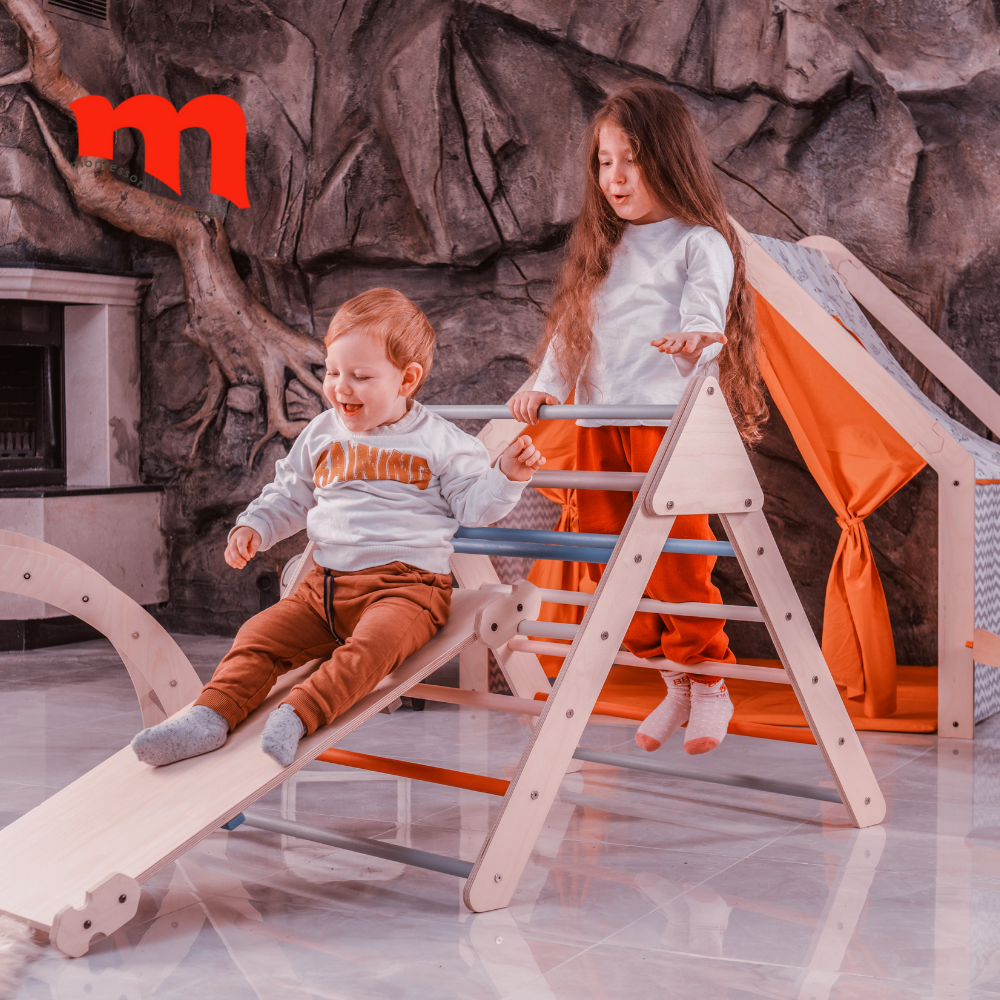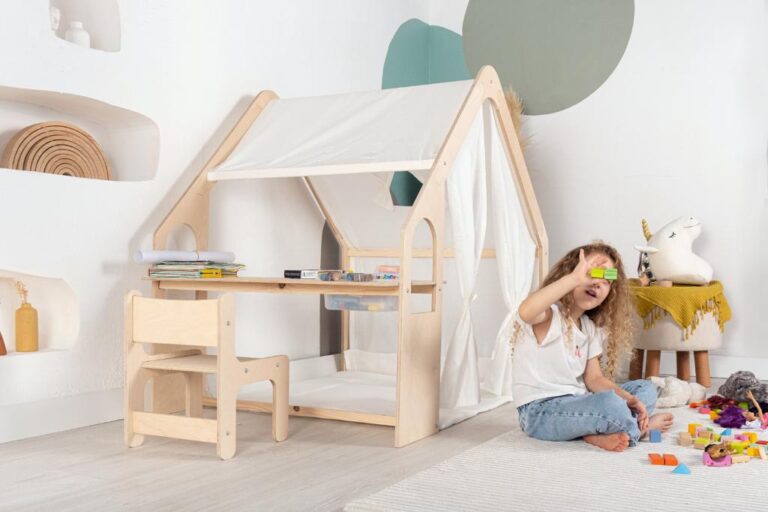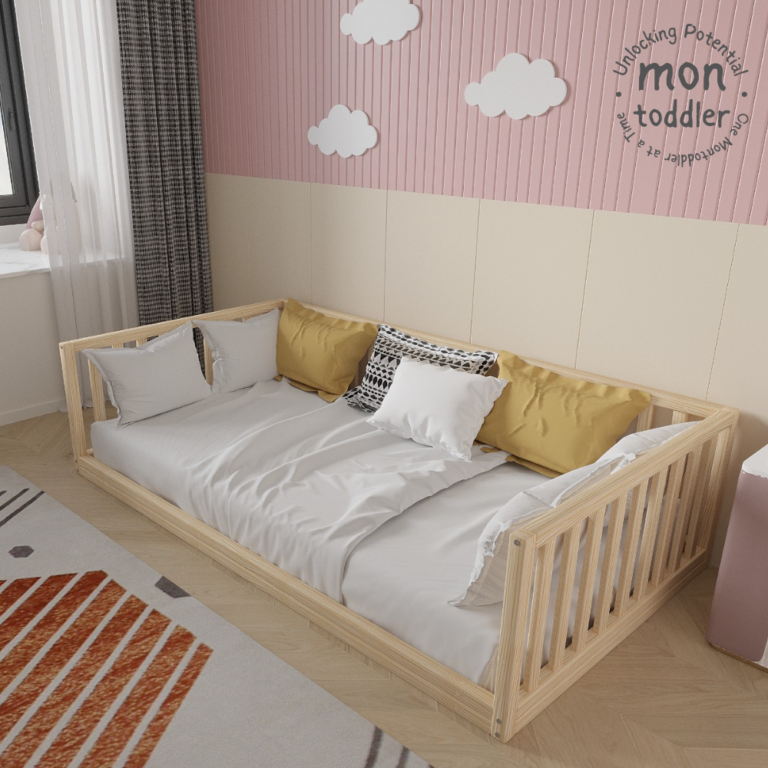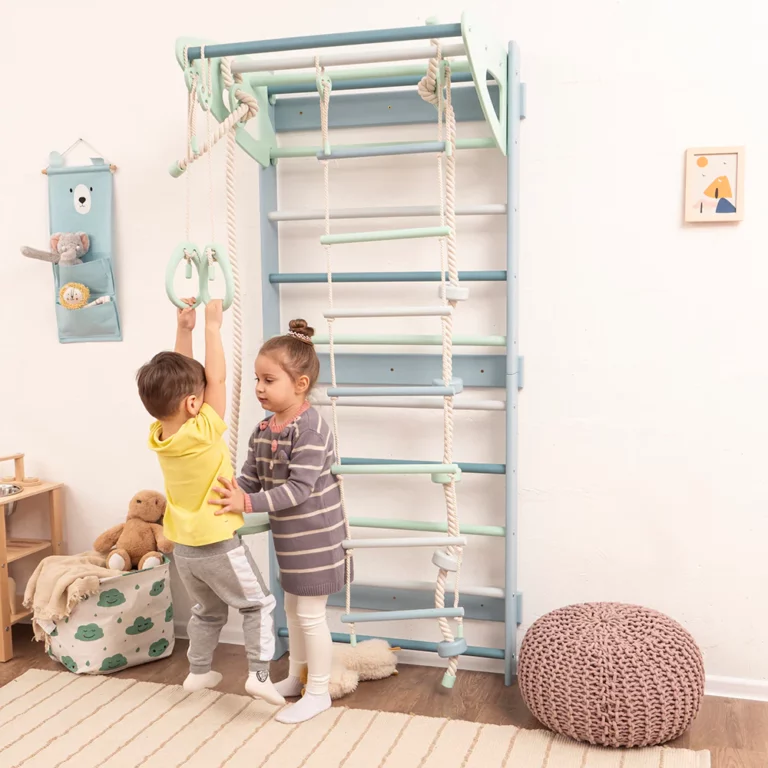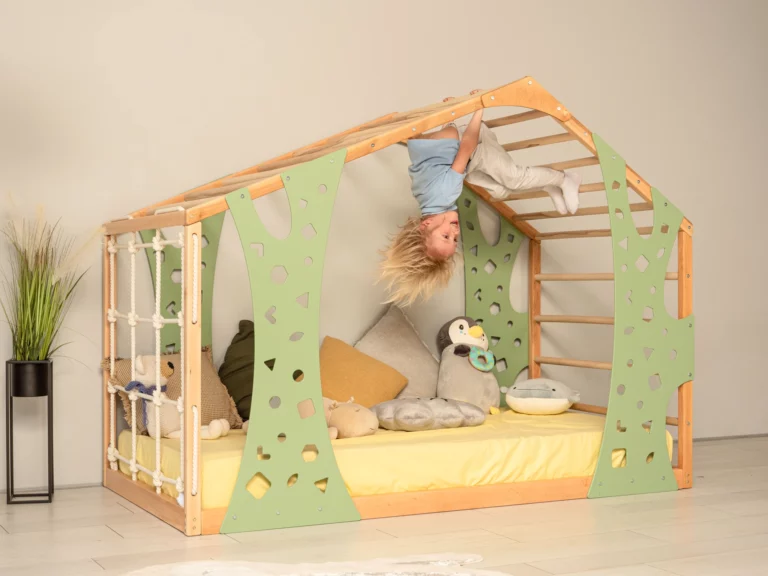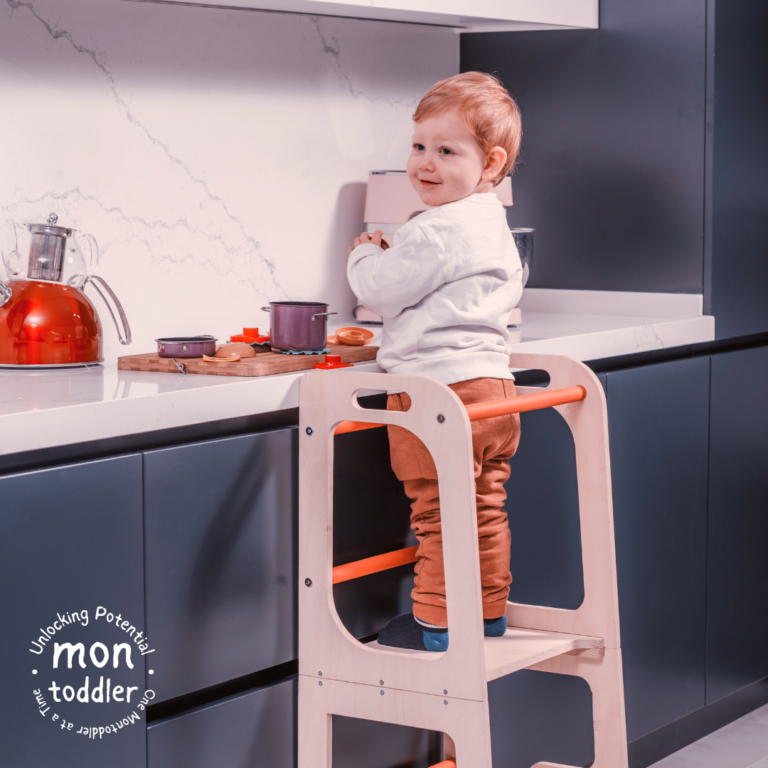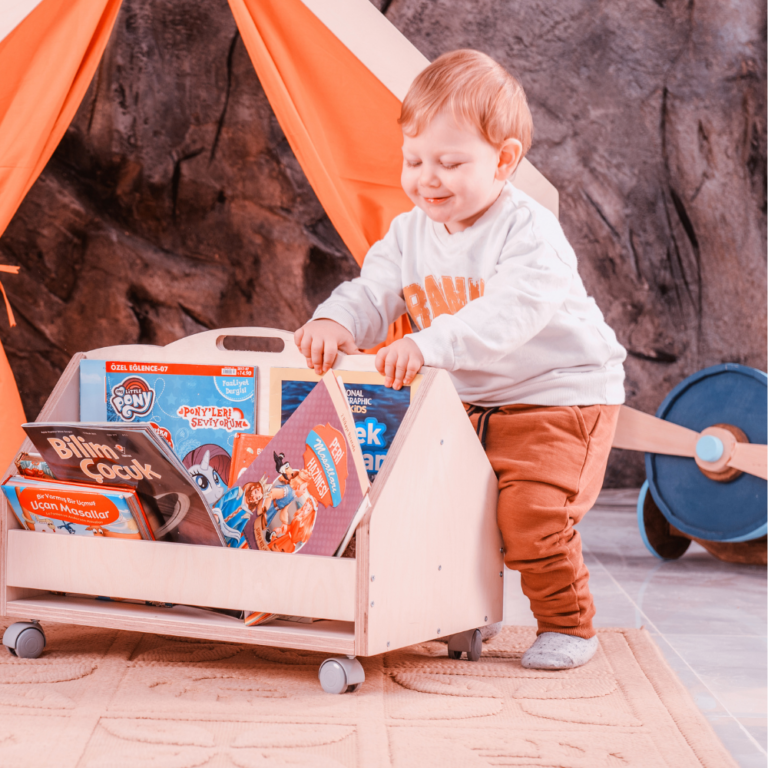7 Best Pikler Triangle Set and How to Pick
The Pikler Triangle is not just a climbing frame for small children; it’s a gateway to a world of exploration and skill-building. If you’ve come across discussions about it in parenting groups or online communities focused on Montessori or Waldorf education, you’re not alone. This unique triangular structure has garnered significant attention, and rightly so, as it offers numerous benefits for children’s development.
What Is a Pikler Triangle?
The Pikler Triangle was conceived by Hungarian pediatrician Dr. Emmi Pikler over a century ago. Dr. Pikler believed in allowing children to explore the triangle on their terms, promoting independence and self-discovery. This versatile piece of equipment can be enjoyed by children as young as 6 months and remains relevant until around 5 years of age. While some parents claim their kids continue to use it beyond that age, it typically serves its prime purpose up to 5 years. The beauty of the Pikler Triangle lies in its adaptability. It doesn’t require constant adjustments as your child grows, serving as a foundational tool for their developmental milestones. Initially, babies can play beneath it, then use it for support to stand, and eventually, they climb and explore, enhancing their imagination and motor skills. Although often associated with Montessori and Waldorf education, the Pikler Triangle was not invented by Maria Montessori or Rudolf Steiner. Nevertheless, it fits seamlessly into these educational philosophies, known for their eco-friendly, organic, and open-ended approaches to learning.
Benefits of the Pikler Triangle
Hours of Entertainment: The Pikler Triangle provides endless fun and exploration, keeping children engaged and active.
Development of Gross Motor Skills: Climbing and moving on the triangle promote the development of gross motor skills, balance, and coordination.
Encourages Creativity: This open-ended toy encourages imaginative play, allowing children to create their games and scenarios.
Builds Self-Confidence: As children navigate the triangle independently, they gain self-assurance and a sense of accomplishment.
Enhances Concentration: Engaging with the triangle requires focus and concentration, aiding in the development of these essential skills.
Best Pikler Triangle Models
1. Montoddler
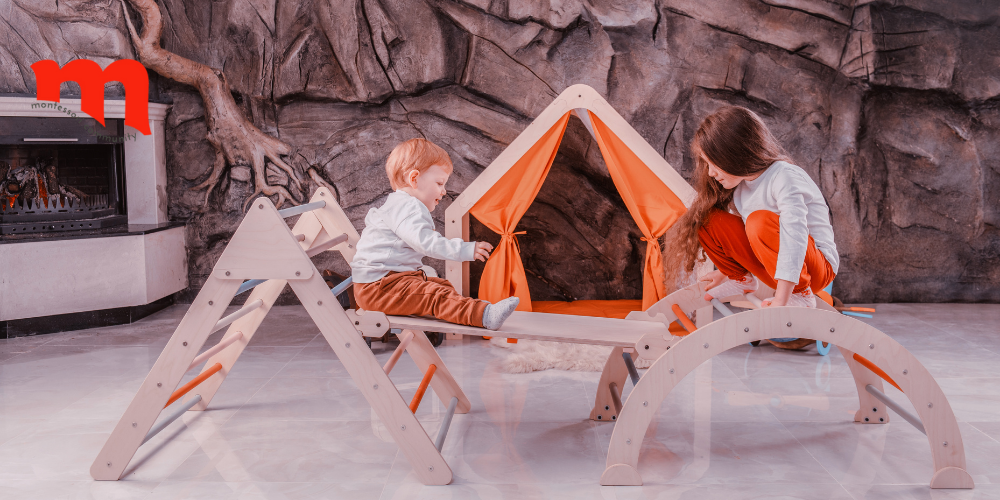
The Montoddler Pikler Triangle is a thoughtfully designed masterpiece, meticulously crafted to nurture your child’s growth. Its ease of assembly, foldable nature, and effortless portability, coupled with its safety features, make it an indispensable complement to the Montessori philosophy.
This exceptional piece of equipment encapsulates the essence of the Montessori approach, encouraging your child to explore, climb, and learn through independent play. Its robust construction guarantees durability, ensuring that it will be a cherished part of your child’s developmental journey for years to come. Plus, Montoddler’s commitment to prompt delivery means that your child can start enjoying the benefits of this remarkable Pikler Triangle without delay.
Different Types of Pikler Triangles
Pikler Triangles have gained immense popularity in the realm of child development and playtime. These versatile climbing structures, inspired by the Pikler Approach, provide children with an opportunity to explore their physical abilities, enhance motor skills, and boost self-confidence in a safe and enjoyable way. While the classic triangular frame with ladder-like rungs is the foundation, there is a remarkable diversity in the types of Pikler Triangles available today. In this article, we’ll delve into the various types and designs, allowing parents and caregivers to make an informed choice for their little ones.
1. Classic Pikler Triangle
The traditional Pikler Triangle features a triangular frame with evenly spaced ladder rungs. It encourages climbing, crawling, and creative play. Classic Pikler Triangles are usually sturdy and durable, catering to a wide age range.
2. Adjustable Pikler Triangle
Adjustable Pikler Triangles come with the advantage of customizable height settings. This feature allows parents to adapt the climbing structure as their child grows, ensuring age-appropriate challenges and safety.
3. Foldable Pikler Triangle
The foldable Pikler Triangle is designed with convenience in mind. It can be easily folded and stored when not in use, making it ideal for smaller spaces or families with limited room. This design often appeals to those seeking portability.
4. Pikler Triangle with Accessories
Some Pikler Triangles come with additional features and accessories, such as climbing ramps, slides, or reversible boards. These add-ons enhance the play experience and offer a broader range of activities.
5. Pikler Arch
A variation of the Pikler Triangle is the Pikler Arch, which replaces the triangular frame with an arch shape. This design encourages children to crawl, balance, and play creatively while providing a unique aesthetic.
6. Pikler Cube
The Pikler Cube is a cube-shaped climbing structure with openings and platforms for children to explore. It offers a different climbing experience and can be used in various ways, including as a hideout or a small stage.
7. Pikler-inspired Furniture
Beyond climbing structures, Pikler-inspired furniture includes pieces like Pikler beds and Pikler shelves. These items align with the Pikler philosophy of fostering independence and exploration in children’s play and daily routines.
When choosing a Pikler Triangle or related structure, consider your child’s age, available space, and your specific preferences. Always prioritize safety by opting for well-constructed, non-toxic materials and closely supervising playtime. Whether you select a classic model, an adjustable version, or one with exciting accessories, Pikler Triangles offer endless opportunities for your child’s physical and cognitive development, ensuring hours of enjoyable play and exploration.
Engaging Activities for Pikler Triangle Fun
Pikler Triangles are fantastic tools for fostering physical and cognitive development in children through play. Here are some creative activity ideas to make the most of your Pikler Triangle:
Climbing Challenge
Create a climbing challenge by marking different levels of difficulty on the rungs using colored tape. Challenge your child to climb up to a specific color or pattern, encouraging them to explore and overcome obstacles.
Peekaboo Play
Place a soft blanket or scarf over the Pikler Triangle and play peekaboo with your child. This not only adds an element of surprise but also enhances their understanding of object permanence.
Crawling Tunnel
Combine the Pikler Triangle with a play tunnel or a large cardboard box to create a crawling tunnel. Your child can climb up the triangle and then crawl through the tunnel, promoting coordination and spatial awareness.
Sensory Play
Hang sensory toys, such as textured fabrics or rattles, from the rungs of the Pikler Triangle. This encourages your child to reach, grasp, and explore different textures and sounds.
Obstacle Course
Set up an indoor obstacle course using cushions, pillows, and soft mats. Incorporate the Pikler Triangle as a climbing element within the course, challenging your child’s balance and coordination.
Musical Adventure
Play music and encourage your child to climb the Pikler Triangle to the rhythm. This activity combines physical movement with auditory stimulation, enhancing their sense of rhythm and body control.
Reading Nook
Place a comfy cushion or a small mattress at the base of the Pikler Triangle, creating a cozy reading nook. Read books together, sparking your child’s interest in reading and storytelling.
Puppet Theater
Hang a small curtain or fabric on the Pikler Triangle to transform it into a puppet theater. Use finger puppets or small stuffed animals for imaginative play and storytelling.
Balance Beam
Lay a wooden plank or a narrow board across the rungs of the Pikler Triangle to create a balance beam. This activity improves balance and coordination while providing a fun challenge.
Nature Explorer
Attach a few artificial or real leaves to the Pikler Triangle and let your child pretend to be a nature explorer. Encourage them to “climb the tree” and discover hidden treasures in the leaves.
Remember to prioritize safety during Pikler Triangle activities. Ensure that the structure is stable, use appropriate padding, and supervise your child’s playtime. These activities promote physical development, problem-solving skills, creativity, and confidence while offering endless hours of enjoyment.
A Pikler Triangle is a versatile climbing structure designed for young children to explore their physical abilities, develop motor skills, and build confidence. It consists of a triangular frame with ladder-like rungs or ramps.
Dr. Emmi Pikler was a Hungarian pediatrician who developed the Pikler Approach, emphasizing respectful and child-led care. The Pikler Triangle is named after her, as it aligns with her philosophy of child development.
What age is the Pikler Triangle suitable for?
Pikler Triangles are typically designed for children between the ages of 6 months to 6 years, although this can vary depending on the model and manufacturer. It’s essential to check the product specifications for age recommendations.
What are the benefits of using a Pikler Triangle?
Pikler Triangles promote physical activity, balance, coordination, and spatial awareness. They also encourage independence and self-confidence in children. Additionally, they can be used for various creative play scenarios.
Is the Pikler Triangle safe for my child?
Pikler Triangles are generally safe when used correctly and under supervision. Ensure that the structure is stable, the rungs are appropriately spaced, and that children are using it according to their developmental stage. Always supervise playtime.
Can I use a Pikler Triangle indoors and outdoors?
Many Pikler Triangles are designed for both indoor and outdoor use. However, it’s essential to choose a model suitable for your intended location and consider the weather-resistant features if placing it outdoors.
How do I choose the right Pikler Triangle for my child?
When selecting a Pikler Triangle, consider your child’s age, the available space, and your budget. Look for sturdy construction, non-toxic materials, and age-appropriate features.
Are there different types of Pikler Triangles?
Yes, there are various Pikler Triangle models available, including foldable, adjustable, and multi-functional versions. Some come with additional accessories like climbing ramps, slides, or reversible boards.
How can I incorporate a Pikler Triangle into my child’s playtime?
Pikler Triangles can be used for climbing, sliding, crawling, and imaginative play. They can also serve as a cozy reading nook or fort when draped with fabric.
Are Pikler Triangles easy to assemble?
Assembly difficulty can vary by brand and model. Some Pikler Triangles come pre-assembled, while others may require some assembly. Always follow the manufacturer’s instructions for safe setup.

